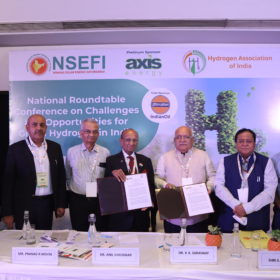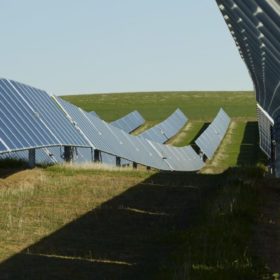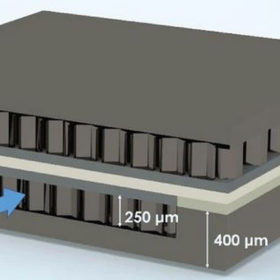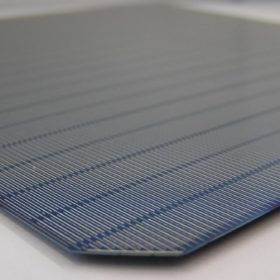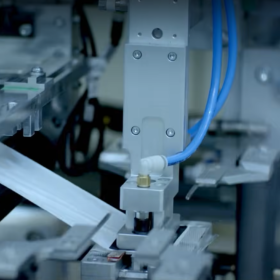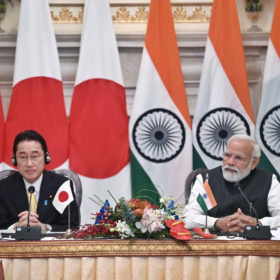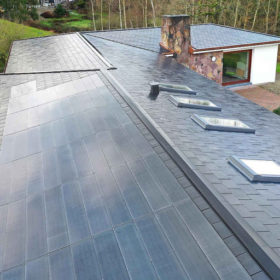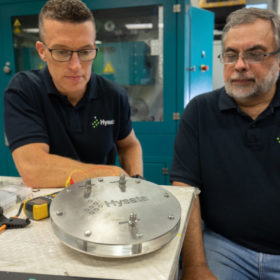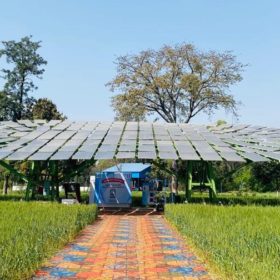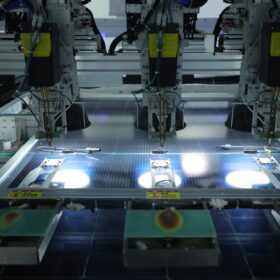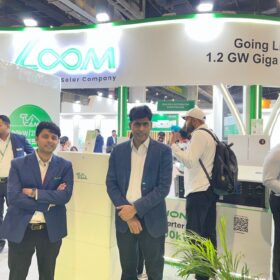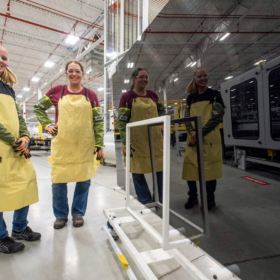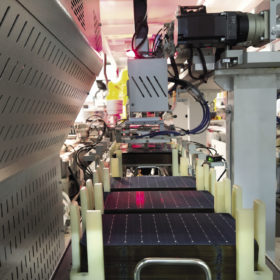NSEFI, HAI launch Green Hydrogen Consortium of Indian Industry
Through this initiative, the National Solar Energy Federation of India (NSEFI) and Hydrogen Association of India (HAI) will drive the industry response to promote indigenous manufacturing, advocate policy measures, and support pilot projects while facilitating industry-academia collaboration.
Nextracker unveils new tracker for sloping ground
The NX Horizon-XTR tracker can be used with all types of modules and is claimed to be an ideal solution for sloping, uneven, and demanding terrain.
Monolithic fuel cell with power density of 5.6kW/L
An international research group has developed a solid oxide fuel cell that may be used in vehicles. The monolith device has an active cell area of around 18 cm2 and was built through common manufacturing processes. It was found to achieve a high power density of 5.6 kW/L, which the scientists said is comparable with that of the best performing fuel cells based on ceramic anodes.
POLO-IBC solar cell with 23.7% efficiency
Scientists in Germany have developed two kinds of solar cells based on n-type doped electron-collecting poly-Si on oxide (POLO) junctions with aluminum-alloyed p+ contacts. Both devices are claimed to be possible upgrades of PERC technologies. The best-performant cell is an IBC device showing a power conversion efficiency of 23.71%, an open-circuit voltage of 711.5mV, a short-circuit current of 41.3mA/cm2, and a fill factor of 80.9%.
Ola Electric invests in Israeli EV battery specialist StoreDot
The Indian electric mobility player, which plans gigawatt-scale battery cell manufacturing, has embraced Israel-based StoreDot’s extreme-fast battery technology that charges from 0 to 100% in just five minutes.
India and Japan to cooperate on solar power, clean hydrogen and electric vehicles
Under their clean energy partnership, both countries also agreed to cooperate in the disposal, recycling, and reclamation of valuable materials from batteries, solar panels, turbine blades, and electronics.
New solar tiles from Denmark
Danish BIPV specialist Dansk Solenergi has added two more tiles to its product range – an 18.15%-efficient dark grey panel and a 16.7%-efficient terracotta product. Both panels have an operating temperature coefficient of -0.34% per degree Celsius.
Australian electrolyzer invention enables green hydrogen under US$1.5/kg by ‘mid 2020s’
“We’re not talking about incremental improvement, this is a really giant leap,” Hysata CEO Paul Barrett told pv magazine Australia. Hysata is commercializing a breakthrough made at the University of Wollongong which effectively, Barrett says, invented a “brand new category of electrolyzer,” vastly improving efficiency.
The long read: The right time for TOPCon
The potential advantages of n-type technologies have long been known to solar manufacturers, and such applications have been the focus of much of their research and development activities. Recent developments see 2022 shaping up as the year when n-type goes into mass production, led by tunnel oxide passivated contact (TOPCon) cells. pv magazine takes a closer at this cell technology and its route to the mainstream.
World’s largest solar tree record smashed
With a PV panel surface area of 309.83m2 the construction has been officially certified by Guinness World Records as the biggest.
